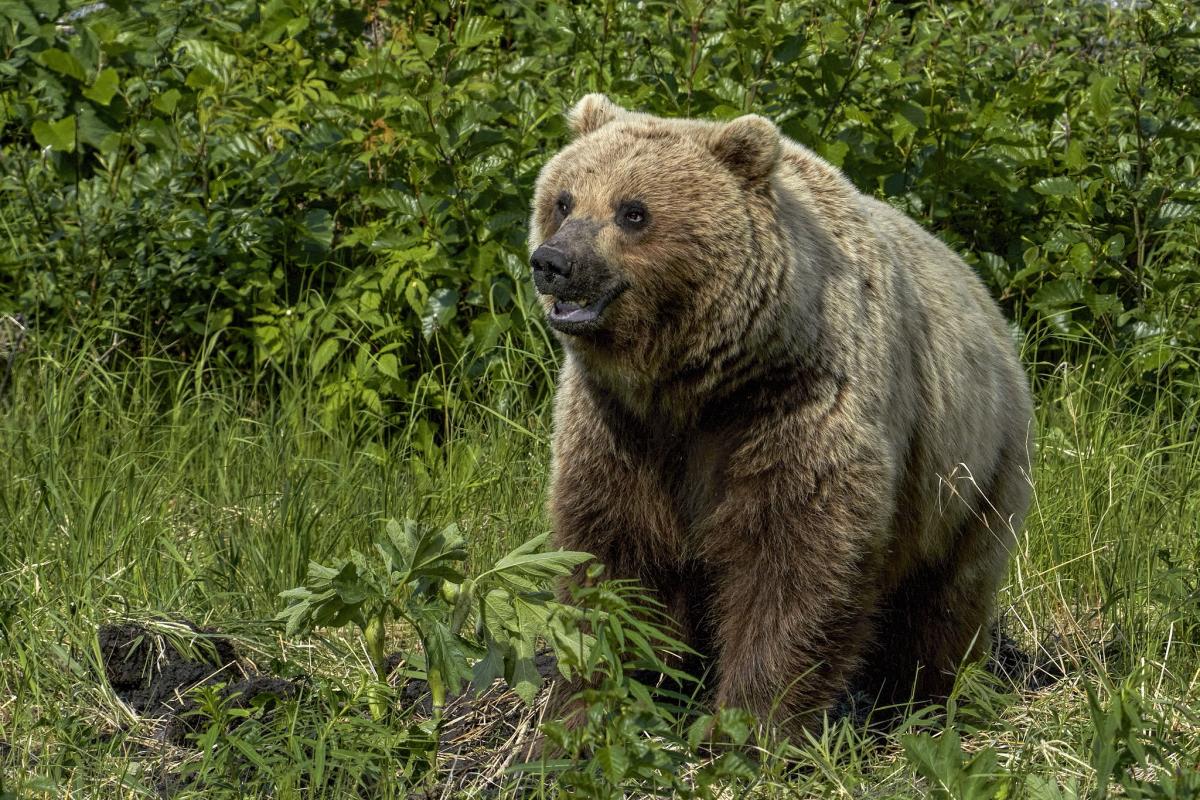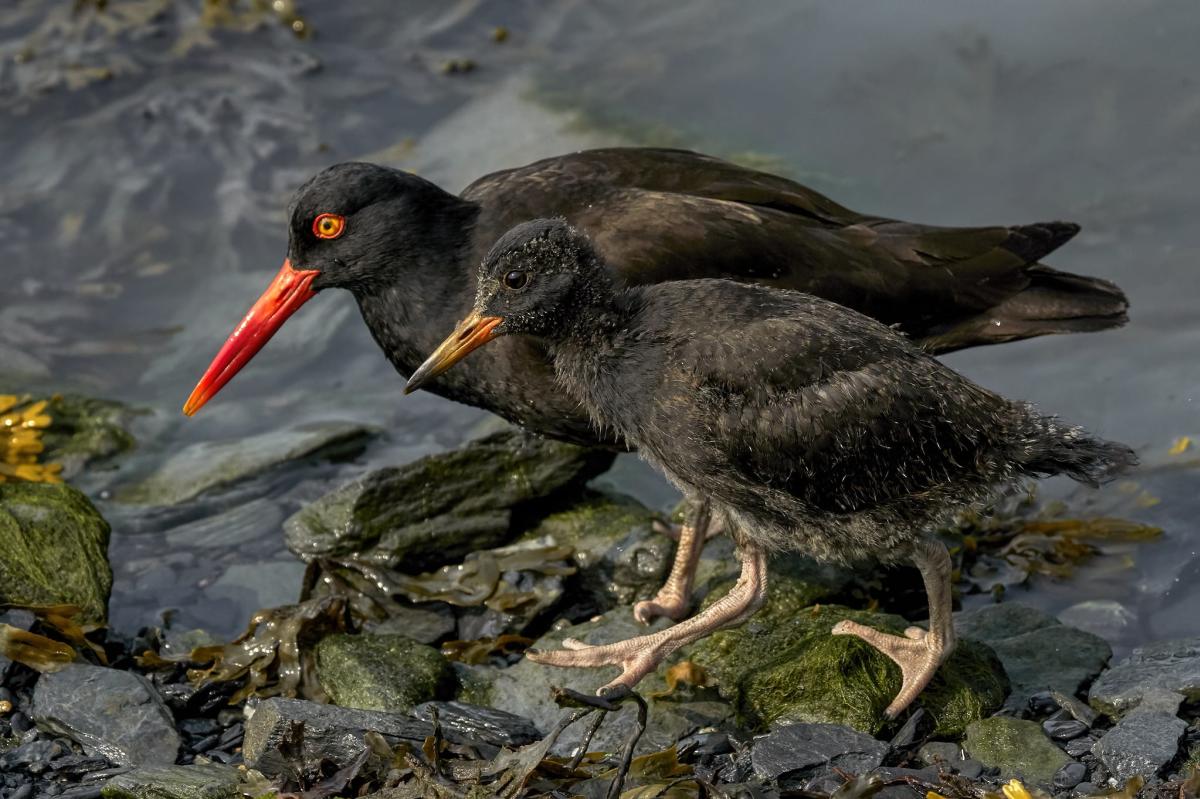Spring is almost here in Valdez and that means the bears will be coming out of hibernation soon and migratory birds will be flocking back as well. Wildlife viewing in the spring, summer and fall is one of the most popular activities for locals and visitors to Valdez. We asked local photographer Gary Minish for his advice on the best places and times to view amazing Alaskan wildlife in Valdez, including bears, sea lions and shore birds.
About Gary
Gary Minish grew up with his family on a homestead two-miles out from the original Valdez townsite. This Alaskan upbringing influenced him greatly: "we had a lot of animals in our yard, and I was fascinated with all the wildlife." Gary's family didn't receive mail often, but one of the few publications that arrived was National Geographic magazine. "National Geographic was my magazine," Gary told us, as he loved looking at the pictures and dreamed of recreating the pictures. At first Gary started studying bird books and attempting to draw animals he saw outside his house, but eventually his parents bought him a cheap camera and he began to take snapshots. Unfortunately, there was no place in Valdez to develop photos at the time, and he had to mail the film out to Anchorage to be developed. When he would get the pictures back two-months later, Gary found that many of his pictures weren't what he expected.

The original Valdez townsite. Photo by Gary Minish.
Gary would not return seriously to photography for a long time. In the early 2000s, Gary was working in Operations at the Valdez Marine Terminal of the Trans-Alaska Pipeline. As part of his job at the terminal, Gary used early digital cameras for documentation. Gary said that this "piqued my interest again" in photography, and his wife ultimately encouraged him to order a digital camera for himself. After that, Gary spent the next two-decades capturing pictures of Valdez's stunning wildlife and natural beauty to share with the world.
Bears
Bear viewing during the summer months is one of the most popular activities for people visiting Alaska, but catching the bears at the right time can be difficult. Gary gave us some hints. If you're in Valdez, he recommends checking out the Solomon Gulch Fish Hatchery on Dayville Road. Gary has passed by the hatchery countless times on his way to work at the terminal and says bears can often be seen feeding on salmon at the hatchery during low tide when its easier for them to move around. In the spring, before the salmon come in, the bears may also be out on tidal flats feeding on saltwater grasses. The best conditions for spotting bears are when low tide is early in the morning or in the evening. Gary says bears prefer to be active in the mornings and evenings as opposed to mid-day because they don't like the heat and they don't like having too much attention from humans.
However, if you photograph bears, remember to stay 'Bear Aware' and always keep safety in mind. "If you're going to shoot bears, have a strong lens and stay far away," Gary advises. It's important to pay attention to the bears and their behavior, and if you notice them becoming irritated or nervous, "it's time to back off and get over to your vehicle."

"Mama's Dirty Mouth" by Gary Minish
Sea Lions
"Photographing sea lions can be tricky," Gary told us, "It's like whack-a-mole. You don't know where they're going to pop up." Gary recommended looking for sea lions at the Solomon Gulch Fish Hatchery as well, as the hatchery is a common place where they aggregate during the summer months to feed on returning salmon. However, even at the hatchery, patience is necessary. Capturing a photo of a hungry sea lion with a fresh salmon in its mouth requires you to anticipate the action: "it just takes practice."
Gary said the best time to look for sea lions at the hatchery is at high-tide (the opposite of when you would look for birds or bears, who prefer low-tide). As marine mammals, sea lions are able to maneuver easier at higher tide and come in closer to the beach at the hatchery. Gary urged photographers to keep their distance from any sea lions on the beach, as sea lions can be aggressive. As with bears or any wildlife, safety should always be a priority in photographing sea lions.

"Down the Hatch" by Gary Minish
Shore Birds
Many of Gary's most stunning photos have been of beautiful shore birds like Arctic terns, oystercatchers, sand pipers or Mew Gulls. We asked Gary how he was able to photograph these birds which may be either very territorial (Mew Gulls and terns) or fly away at the first sign of a human approaching. Gary told us that photographing shore birds is about a learning process of observing the birds over time and learning their behavior. Its also a process of gaining the birds' trust: "believe it or not, a bird will recognize you."
In order to get close to shorebirds, Gary recommends not directly approaching them, but rather walking past them slowly. A direct approach may cause the birds to take you for a predator, and then fly away. However, an indirect approach will put them at easy. "Stop for a while and they'll quit worrying about you," says Gary.
"I swear, I had a Mew Gull hen use me as a babysitter once," Gary told us. According to Gary, he had been sitting on a rock photographing the gulls for sometime when the mother Mew Gull brought her chicks over to the rock and then left them next to Gary before she "flew off to go fishing". Gary believes that the mother Mew Gull felt that her chicks would be safe next to him until she returned with some fish.

"Oystercatchers Old & New" by Gary Minish
Eagles, Swans and Ducks
While most of the wildlife activity around Valdez is located along the beaches, there are areas further inland to enjoy wildlife photography or viewing. Gary recommended Robe Lake as a great area to view swans and ducks, as well as eagles later in the season when salmon reach the lake. Lowe River is another option, as eagles congregate along the river in the fall to look for salmon.
If you want to photograph wildlife in Valdez, Gary recommends you invest in a camera with a decent zoom lens, take burst shots, and use your vehicle as your blind. "The best blind out there is a vehicle," Gary told us, as most animals are used to seeing cars and trucks drive along the highway. After snapping the perfect shot, Gary also recommends sharing the photo with the world: "What good is taking pictures of beautiful things if you can't share them with anyone?"

"Sneak Peak" by Gary Minish



